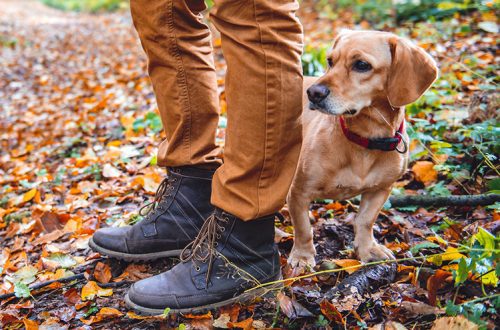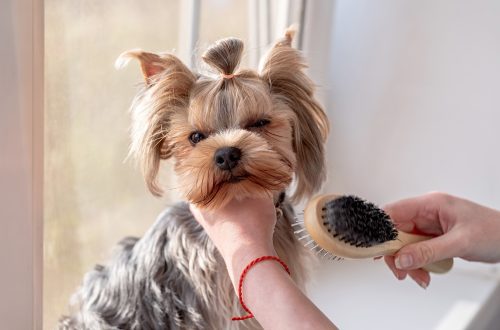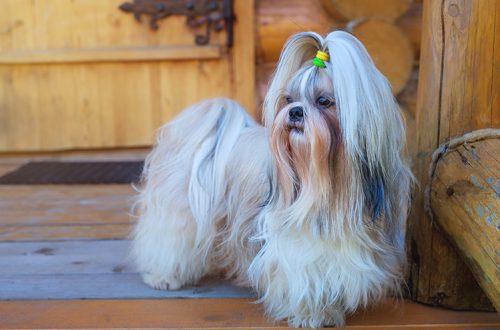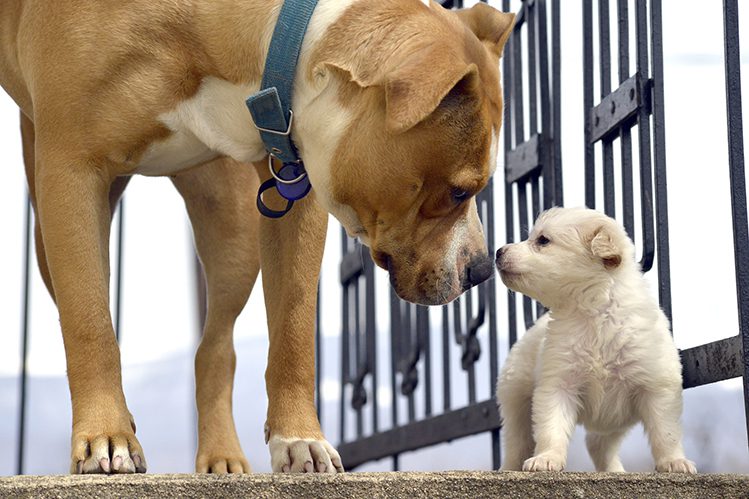
How to make a puppy with an adult dog?
Is there a four-legged addition to your family? And how will the older dog perceive the new puppy? Let’s help them make friends! Our article has 10 recommendations on how to do this.
How to make two dogs friends?
- Security is the foundation of the foundations.
Before introducing a new family member to the “older” dog, ensure their safety. Both pets must be healthy, dewormed and vaccinated. The quarantine period after vaccination must also pass. After making sure that your wards do not pose a danger to each other, you can move on to their first contact.
- Rule 1. Don’t overestimate.
Do not expect your pets to joyfully run towards each other, start eating from the same bowl, play with the same toys and sleep sweetly on the same couch. Over time, some dogs actually begin to do this. But scenarios are different – and it is better to prepare yourself for them in advance. Many dogs live under the same roof quite peacefully, but apart: each “on his own” territory, in his own personal space, and always keep a distance. This is completely normal.

- Rule 2. Give time to adapt.
Friendship starts from a point of peace. Imagine how a puppy feels in the first days after moving to a new home? And what about an adult dog whose habitual territory is suddenly encroached upon? Both pets are under stress. They smell unfamiliar smells of each other and do not know how to perceive these changes. Violation of the usual way of life scares both.
Introducing dogs at once, forcibly attracting each other, is a very bad idea. It is better if in the first days both pets are seated in different rooms and get to know each other’s smells remotely, at a safe distance.
You can bring an item that smells like an adult dog to a puppy, and an item that smells like a puppy to an adult dog so that they identify each other in advance. It can be a bed or a toy. After a day or two, you can try to change rooms: move the puppy to the room where the adult dog was, and vice versa, so that they sniff everything properly.
A good option is to close the puppy in the room and let the dog sniff the door. Often, both pets sit on opposite sides of the door and sniff each other through the crack. This is a great first date scenario!
- Rule 3. Introduce dogs in familiar territory, in a comfortable environment.
The best place for a first acquaintance is your home. The territory to which the older dog is accustomed, where he is comfortable. The atmosphere should be calm. Make sure that stressful factors do not distract your pets.
The first personal contact can be made through the carrier. Let the baby be in a closed carrier, in complete safety. And the old-timer dog calmly sniffs him from all sides.
It is a bad idea to make a holiday out of the first acquaintance, invite relatives and friends and joyfully drink champagne. New people and noise will unnerve pets. The appearance of a puppy in the house is an important and joyful event. It must be celebrated with loved ones, but it is better to do it later, when the puppy is fully adapted and contact between the pets is established.
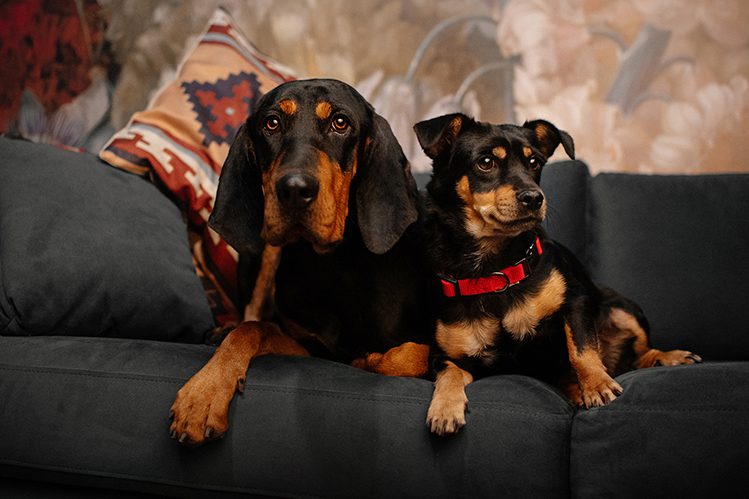
- Rule 4. Control contacts.
All communication between dogs should take place under your supervision. Even if you have the friendliest dog in the world, you cannot know how he will react to a new baby, how he will behave.
Let the dog sniff the puppy, but immediately stop any unwanted actions. If the dog shows aggression, take the baby to another room so as not to frighten him, and repeat the acquaintance the next day.
If the dog reacts calmly to the clumsy baby, let them talk longer. But make sure that the puppy is not too intrusive and does not bring down the whole flurry of his childish delights on his older comrade.
- Rule 5. Divide property.
Your task is not to give pets a reason for jealousy. Do not try to teach dogs to “share”. A puppy should not claim the things of an old-timer dog, and vice versa. Each dog should have its own bowls, its own place and bed, its own toys, its own accessories for walking. Make sure that they do not violate each other’s personal space, if this brings tension to at least one of the parties.
- Rule 6. Separate feedings.
It is better to feed the pets at a separate time, at least for the period of adaptation, until they make friends. Dinner on someone else’s plate may seem much more attractive than your own. And as a result – a quarrel!
- Rule 7. Involve in joint walks and games.
If we share property and feeding, then games and walks are the opposite! The way to friendship between dogs lies through joint games! Of course, they must be suitable for both pets in terms of age and capabilities. Don’t forget to bring treats with you to encourage your wards. For joint treats it will be very difficult not to make friends!
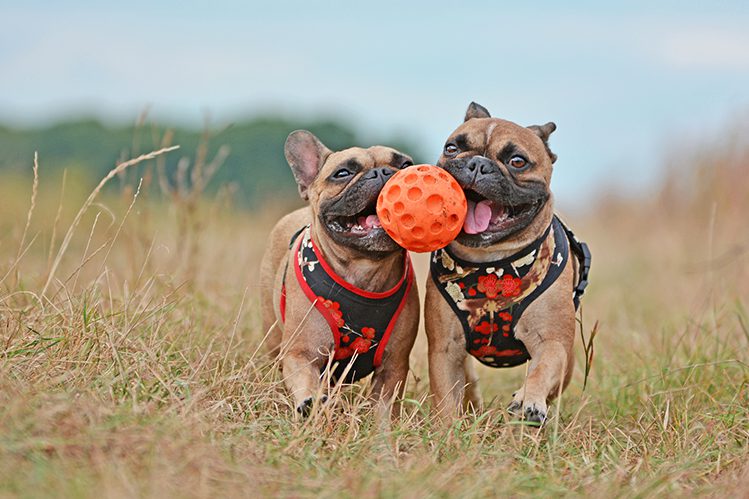
- Rule 8. Do not insist or scold.
If the dogs are in no hurry to find a common language with each other, do not try to force things. Do not scold the “intractable” pet, do not be offended and do not move away from him. Any of your negative reactions will only complicate the situation. For the dog, they will be a signal that the owner is carried away by a new pet and no longer loves her. What a friendship!
- Rule 9. Make friends with an animal psychologist.
Some dogs find an approach to each other already in the first days. For others, making contact can take weeks or months. Enlist the support of a specialist to help your wards tune in to a wave of mutual understanding. The zoopsychologist is your superhero. It will help resolve “irresolvable” conflicts between pets and give you some super life hacks that will be very useful in education.
- Rule 10. Attention – equally!
We’ve saved the hardest part for last. Now you are a parent of two dogs, and this is a huge responsibility! In some fantastic way, you have to evenly distribute attention between pets. Make sure that none of them feel abandoned and deprived. So that you, all together, always remain one team. This is a quest, isn’t it? But you can do it!
By nature, it is laid down in such a way that adult dogs perceive puppies in a friendly and condescending manner. If your senior pet is properly socialized, you will only have to guide your wards a little and enjoy what is happening. Be patient, remain a loving owner – and everything will certainly work out!



